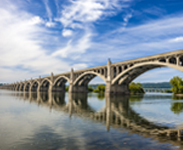
The Complete Evolution of Harley-Davidson Engines: From F-Head to Milwaukee-Eight
The Early Years: F-Head and Flathead (1903-1948)
F-Head Engine (1903-1929)The story of Harley-Davidson engine history begins with the F-Head. Designed by William Harley himself, this single-cylinder engine was the heartbeat of the very first Harley-Davidson motorcycle in 1903.
Key Features:- Single-cylinder design
- Inlet over exhaust (IOE) configuration
- Displacement ranged from 24.74 cubic inches to 30.16 cubic inches
Flathead Engine (1929-1948)
The Flathead, also known as the side-valve engine, marked Harley’s transition to a V-twin configuration that would become their signature style.
Key Features:- 45-degree V-twin layout
- Simpler design compared to the F-Head
- Easier to manufacture and maintain
The Middle Era: Panhead and Shovelhead (1948-1984)
Panhead Engine (1948-1965)
Named for its distinctive pan-shaped rocker covers, the Panhead was a significant leap forward in Harley-Davidson engine history.
Key Features:
- Hydraulic valve lifters for quieter operation
- Aluminum heads for better heat dissipation
- Internal oil lines for a cleaner look
Shovelhead Engine (1966-1984)
The Shovelhead, with its shovel-shaped rocker covers, built upon the success of the Panhead while offering more power.
Key Features:
- Increased compression ratio
- Higher horsepower output
- Improved oil circulation system
The Modern Era: Evolution and Twin Cam (1984-2016)
Evolution Engine (1984-1999)
The “Evo” marked a turning point in Harley-Davidson engine history, offering reliability that helped save the company during tough times.
Key Features:
- Aluminum alloy cylinders and heads
- Redesigned combustion chambers
- Significantly improved reliability
Twin Cam Engine (1999-2016)
The Twin Cam engine got its name from its two cam shafts, one for each cylinder.
Key Features:
- Dual overhead cams
- Increased displacement options (88, 96, 103, and 110 cubic inches)
- Better performance and smoother operation

The Current Generation: Milwaukee-Eight (2017-Present)
The Milwaukee-Eight represents the latest chapter in Harley-Davidson engine history, combining tradition with modern technology.
Key Features:- Four valves per cylinder (hence the “Eight” in the name)
- Improved heat management
- Reduced vibration for a smoother ride
- Available in 107, 114, and 117 cubic inch displacement
The Impact of Harley-Davidson Engine History on Motorcycle Culture
The evolution of Harley-Davidson engines isn’t just a tale of mechanical progress; it’s a story that has shaped motorcycle culture worldwide. Each engine brought its unique sound, feel, and performance, contributing to the Harley mystique.
From the potato-potato-potato idle of the Panhead to the powerful rumble of the Milwaukee-Eight, these engines have become the heartbeat of the American motorcycle dream. They’ve inspired custom builders, thrilled riders, and cemented Harley-Davidson’s place in motorsports history.Looking to the Future
Reflecting on the history of Harley-Davidson engines, one can’t help but wonder what comes next? With the introduction of electric motorcycles like the LiveWire, Harley-Davidson is proving that they’re not afraid to innovate while honoring their rich heritage.
One thing’s for sure – whatever comes next will be built on the foundation of over a century of engineering excellence and passion for the open road.
From the F-Head to the Milwaukee-Eight, the evolution of Harley-Davidson engines tells a story of American ingenuity, perseverance, and the never-ending quest for the perfect ride. Each engine in Harley-Davidson’s history has left its mark, not just on the motorcycles they power, but on the hearts of riders around the world.
Whether you’re a die-hard Panhead fan or you’re in love with the smooth power of the Milwaukee-Eight, there’s no denying the impact of Harley-Davidson engines on the world of motorcycling. Here’s to the next chapter in this ongoing saga of two-wheeled excellence!
This article has been provided for informational purposes only and is based on the most reliable information available on the date of publication.





